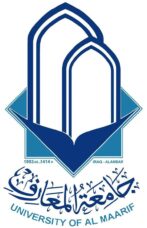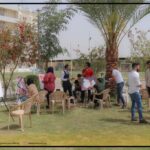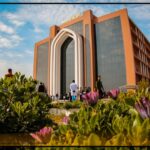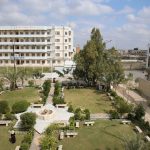- Sustainable development
- Sustainability at Al-Maarif University College
- Gardens at Al-Maarif University College
- Medical Waste Treatment
- Sustainability Reports
Sustainable development
Objectives
Go to Sustainability Website
The Sustainable Development Goals, also known as the Global Goals, have been adopted by all UN state members in 2015 as a global call to take action to end poverty, protect the planet and ensure all people enjoy peace and prosperity by 2030. The 17 goals are complementary — that is, an achievement of any of them will lead to the achievement of part of the other goals, and that this progress must achieve a sustainable social, economic and environmental balance.

Efforts of Al-Maarif University College in Achieving the Sustainable Development Objectives
Despite the disruptions in educational process during the COVID-19 virus pandemic, the role of academia in promoting the Sustainable Development Goals (SDGs) on university campuses is more important than ever. To encourage all to work together in order to achieve and integrate a set of goals and to organize a model to enable the college to integrate sustainable development objectives into curricula.
College Policy of Sustainable Environment:
The environmental sustainability policy forms a major part of the modern vision of Al-Maarif University College. The college’s environmental policy is based on several pivots, the most important of which are:
- Raising awareness of the concepts of environmental sustainability among students and teaching staff at the university.
- Introducing pioneering projects in sustainability.
- Encouraging scientific research among students and teachers on issues related to the environment and its problems.
- adopting plans and programs; To conserve energy and treat waste.
Environmental projects and programs
Through some of its decisions, projects and programs, the college tries to achieve the goals it seeks from its environmental policy. The college, through its administrative departments, educational facilities, teaching staff, and employees, cooperates; To make Al-Maarif University College a green, environmentally friendly institution through the following:
- Introducing a program (Environmental Awareness Week), which includes student activities and events; To spread environmental awareness for first-year students, during the first semester of the academic year.
- Emphasis on the need to rationalize the consumption of paper by the teaching and professional staff at the university.
- Encouraging teachers and students to conduct research studies on the environment and solve its problems by conducting two research papers annually. To address the environmental crises in the country.
- The college holds periodic conferences and symposia dealing with environmental pollution problems in Iraq, and ways to treat or reduce them.
Gardens at Al-Maarif University College
Al-Maarif University College seeks to enhance its gardens, where plants play a major role in reducing carbon dioxide in the air and reducing the intensity of pollution. Gardens represent a great outlet for students and teachers alike, as they provide a service of recreation, reduce tension, and pleasant to see. Hence, the college has given an increasing and great interest in expanding green spaces and planting them with beautiful types of flowers, roses and shrubs, and covering the land in green.
Greenhouse
Environmental diversity is an inducing concept, where climate change has become one of the most prominent topics that the world focuses on now. Vegetation is one of the important factors to maintain the balance of gases in the atmosphere and because of its positive impact in mitigating global warming. The college gardens has a greenhouse for cultivation and development Oxygen-producing plants with an area of 300 square meters and with the types urged by the project management of planting one million trees, which is adopted by the Ministry of Higher Education and Scientific Research. In preparation for planting it in gardens.
Medical Waste Treatment
Al-Maarif University College is keen to preserve the general health of the individual, society and the environment by spreading awareness among students, staff and teaching staff of the need to classify waste secretions that are produced in all medical laboratories in the college in preparation for their transfer to the treatment site in accordance with health and environmental controls and mechanisms for maintaining safety according to the Ministry of Education’s book Higher Education and Scientific Research \ Department of Private University Education \ Administrative Division in the number (338) on (1/1/2020).
Treatment procedures for medical waste
- Chemical waste (Waste products) in dark bottles, and the materials are labeled with an adhesive label, in order to prepare them for the purpose of transferring them to the Department of Chemical and Biological Hazardous Waste Treatment and Destruction / Ministry of Science and Technology.
- Biological waste, which includes (samples of serum or blood, saliva, various swabs, laboratory slides and wine syringes, in addition to lancets for taking blood samples. They are collected in special containers in preparation for transportation to the incinerator.
- Samples and culture media for bacterial growth are destroyed weekly by collecting them in a bag and placing them inside a wet pressure oven (Autoclave) for half an hour, then they are collected in specific containers to be transferred to a special incinerator.
College activities
- Holding workshops and educational lectures for laboratory officials and the rest of the college on how to safely handle and sort hazardous waste in accordance with international health regulations.
- Training service workers in scientific branches and increasing their awareness regarding the type of waste, how to transport it safely, and not to mix hazardous materials with general materials and waste.
- Increasing the awareness of students, putting signs and guidance during the practical application of the types of waste and the correct sorting methods.
- Coordination with the Department of Chemical and Biological Hazardous Waste Treatment and Destruction of the Ministry of Science and Technology.
- Provide marked and yellow waste containers.
- Providing yellow and red containers with clear identification marks through color and writing to distinguish the materials hazardous to health and the environment from the rest of the materials and to facilitate sorting from the source.
- Providing distinctive, dark containers to carry out temporary storage of hazardous waste in preparation for its transportation to the treatment site on a periodic and safe basis.
- SDG 1: No Poverty
- SDG 2: Zero Hunger
- SDG 3: Good Health and Wellbeing
- SDG 4: Quality Education
- SDG 5: Gender Equality
- SDG 6: Clean Water and Sanitation
- SDG 7 : Affordable and Clean Energy
- SDG 8 : Decent Work and Economic Growth
- SDG 9: Industry, Innovation, and Infrastructure
- SDG 10: Reduced Inequalities
- SDG 11: Sustainable Cities and Communities
- SDG 12: Influence Responsible Consumption and Production
- SDG 13: Climate Action
- SDG 14: Life Below Water
- SDG 15: Life On Land
- SDG 16: Peace, Justice and Strong Institutions
- SDG 17: Partnerships for the goals














